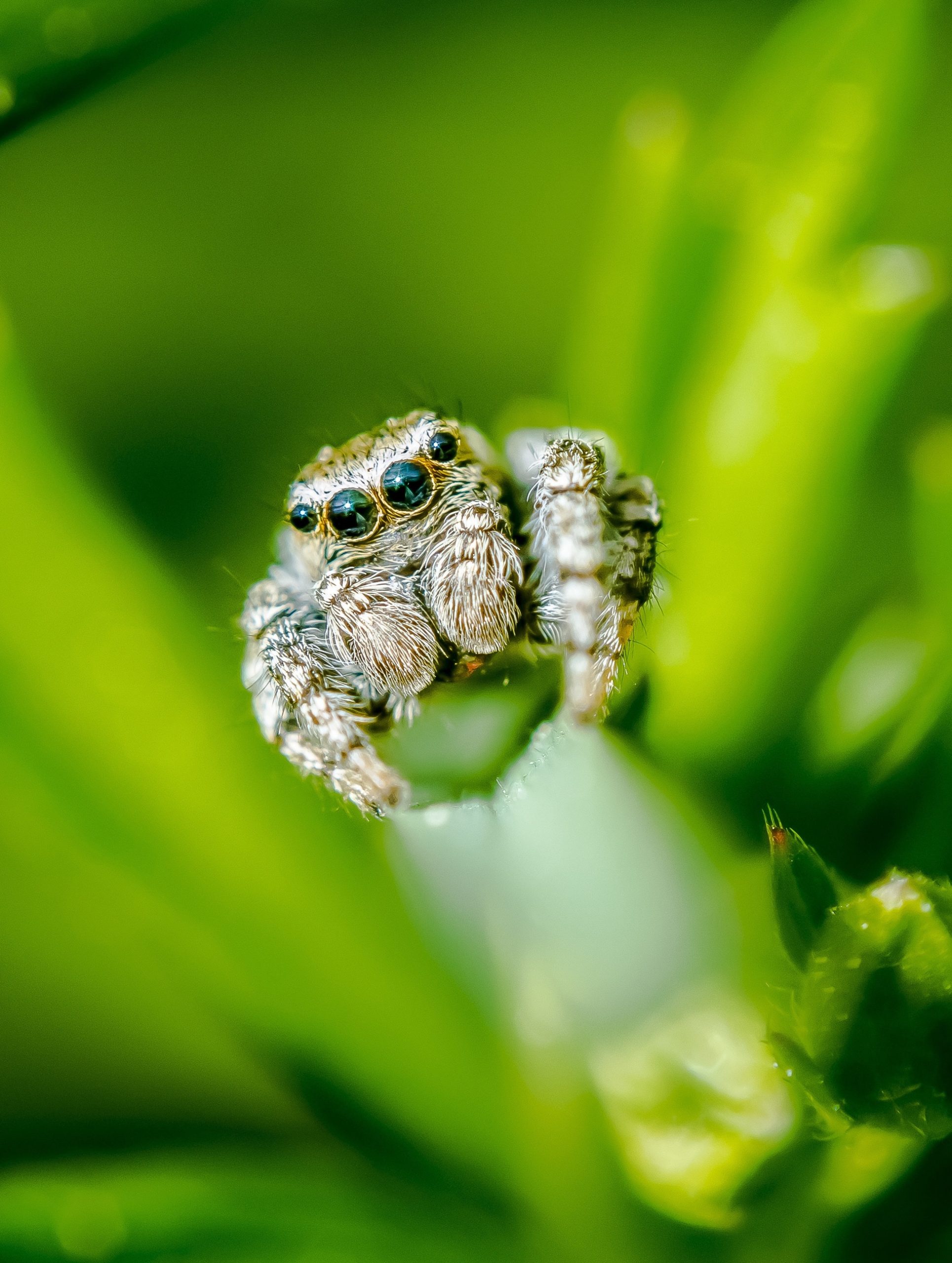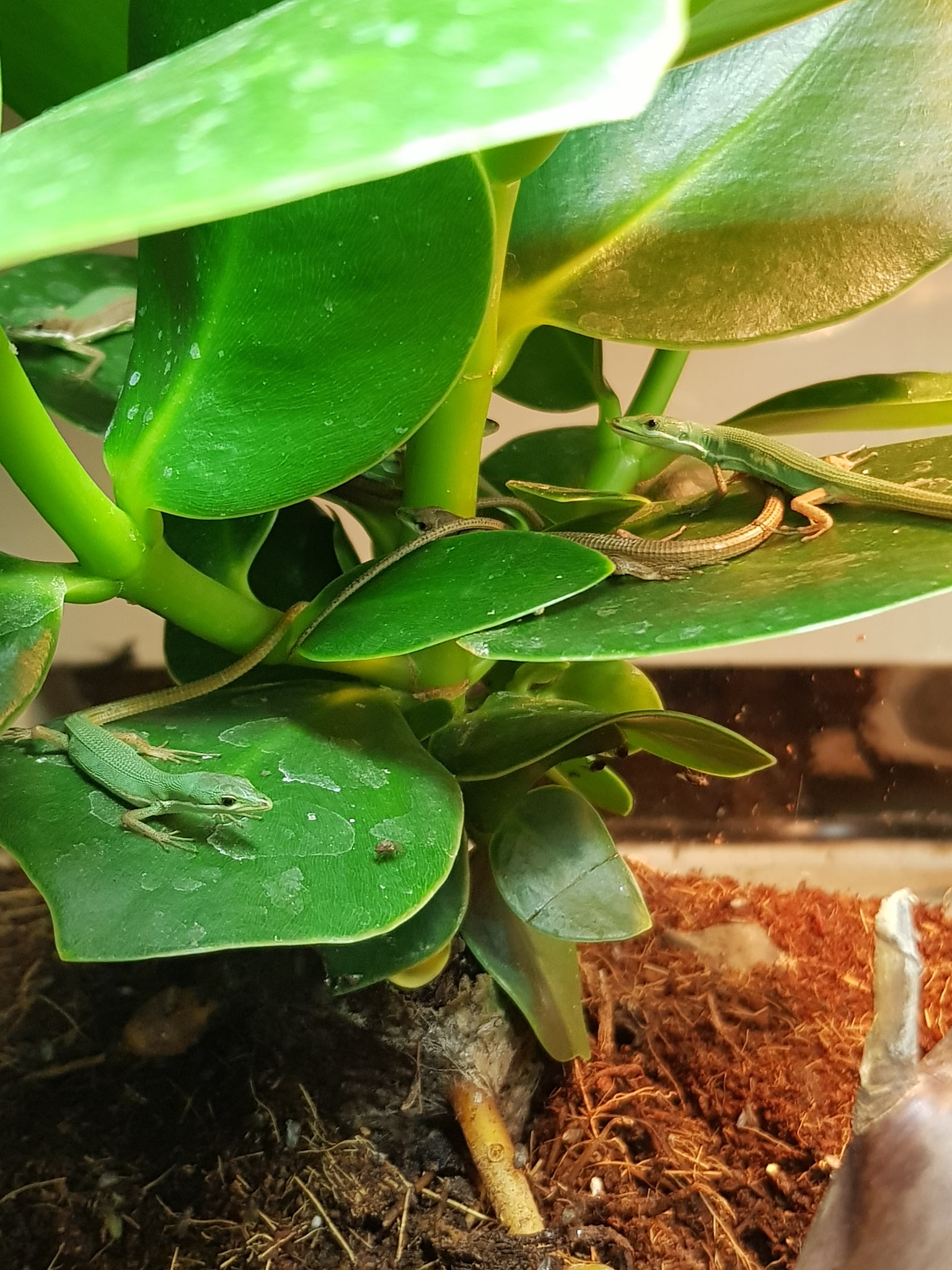The Fascinating World of Jumping Spiders
Being in the world of arachnids jumping spiders true masterpieces of evolution and efficiency. These small, colorful creatures belong to the Salticidae family and are characterized by their extraordinary jumping ability and agility. In this blog we dive into the fascinating world of jumping spiders and discover why they are among the most intriguing and fun spider species.
Discover the Way of Life of Jumping Spiders
jumping spiders have a fascinating lifestyle characterized by their diurnal activity and preference for warm, sunny environments. They can be found on the ground, on walls and in bushes, waiting patiently for their prey.
Search in bad weather or during the winter months jumping spiders shelter in small silk nests. These nests are often made in crevices, cracks, or other sheltered areas. It offers them protection from the elements and possible predators.
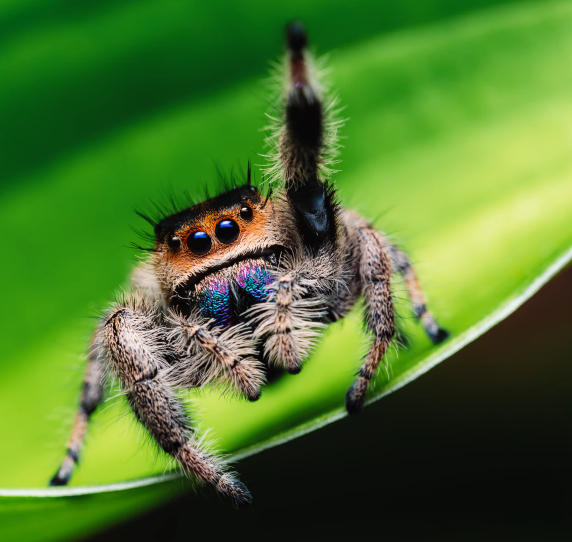
Jumping spiders are agile hunters that patiently lie in wait on the ground, walls and bushes. They adapt effortlessly to different environmental conditions, find shelter in silken nests during inclement weather, and use their jumping ability and agility to successfully hunt prey.
The ability of jumping spiders to adapt to different environmental conditions and to retreat into small shelters contributes to their survival and success in diverse habitats
Show all in all jumping spiders an active and versatile lifestyle. They are well adapted to their environment and use their unique abilities, such as their jumping ability and agility, to hunt prey. At the same time, they also show flexibility by partly consuming nectar and finding shelter in silken nests. Create these properties jumping spiders to intriguing and successful arachnids in nature.
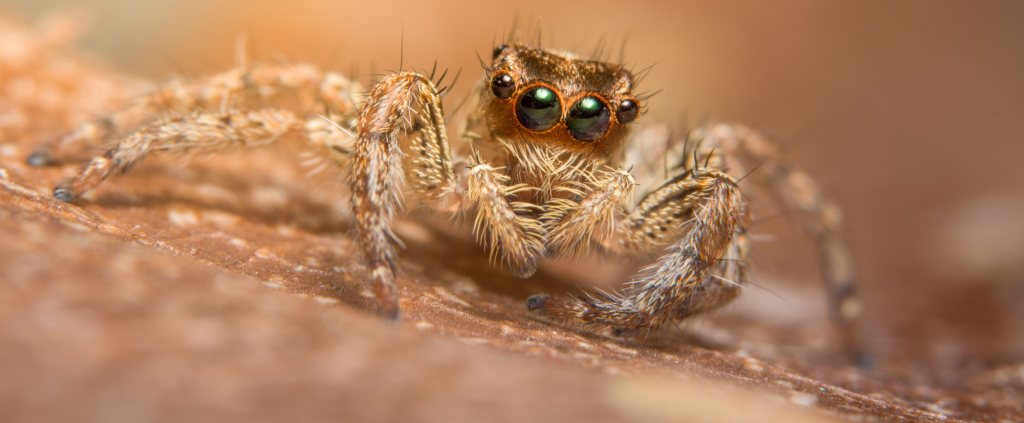
The External Characteristics of Jumping Spiders
The body size of this little one jumping spiders generally varies from 2 to a maximum of 20 mm, depending on the species. Generally have jumping spiders a compact body covered with stout hairs. Most jumping spiders have a brown or black-gray coloration, which helps them camouflage into their environment.
Jumping spiders are small arachnids with a body length ranging from 2 to 20 mm. They have a compact body covered with stout hairs and can camouflage themselves well. With strikingly large eyes and eight agile legs, they are equipped for an active lifestyle, exploring their environment and hunting and jumping with precision.
jumping spiders have remarkably large and well-developed eyes compared to many other spider species. They have eight eyes in all, arranged on their foreheads. Of these eight eyes, two are larger, anterior middle eyes that serve as main visual aids.
Just like other spiders are too jumping spiders equipped with eight legs. Each of these legs is equipped with claws and tassels, which allow them to explore their environment and gain grip while hunting and making jumps.
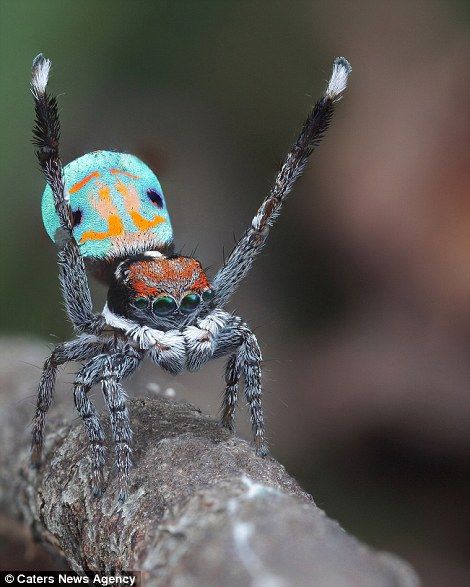
Jumping spiders come in an array of colors and patterns
One of the most notable features of jumping spiders is their striking colors and patterns. They vary in size and color, but can often be recognized by their vibrant combinations of yellow, green, orange and metallic hues.
This colorful appearance serves multiple purposes, such as attracting mates and deterring predators. Some jumping spider species, such as the Maratus and Habronattus, are best known for their vibrant colors and elaborate mating rituals in which they raise two legs in the air and perform a dance to charm the female.
Extraordinary eyesight
The eyesight of jumping spiders is nothing short of astonishing. These arachnids have remarkably large and well-developed eyes compared to many other spider species. They have a total of eight eyes, arranged on their foreheads. Of these eight eyes, two are larger, anterior middle eyes that serve as the main aids.
Jumping spiders are masters of eyesight and precision. With remarkably large and well-developed eyes, they can perceive movements of prey and possible threats with extraordinary precision. Their keen eyesight allows them to explore the world around them and jump with incredible accuracy.

These eyes provide sharp vision and pose jumping spiders capable of detecting prey movements and potential threats with great precision. This extraordinary sight poses jumping spiders able to perceive prey movements and potential threats with great precision. Their excellent vision allows them to explore and navigate the world around them with extraordinary skill. This sharp vision also allows them to jump with incredible accuracy.
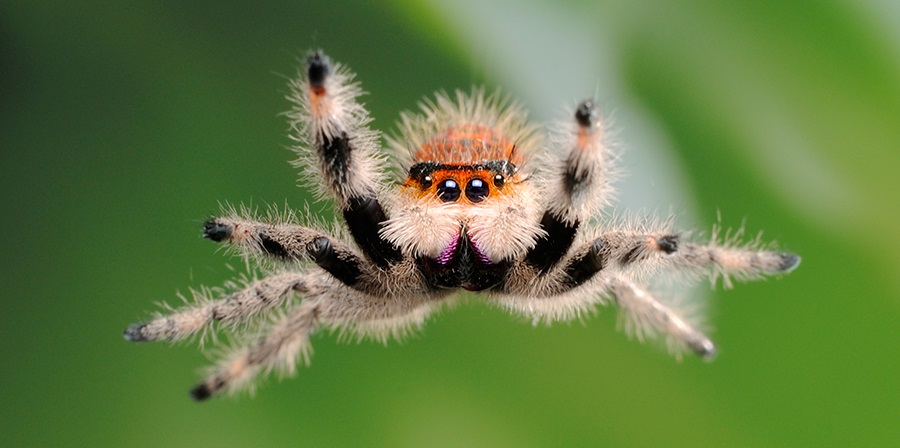
The Spider That Really Jumps
The name "jumping spider" says it all: these arachnids have the ability to make huge jumps. jumping spiders are known for their acrobatic jumping technique, which is truly amazing. Despite the lack of special jumping muscles in their legs, they are capable of enormous leaps.
Jumping spiders are masters of acrobatic jumps. With an amazing jumping technique, they can bridge enormous distances. Their impressive strength and precision make them true acrobats of the spider world.
They use a remarkable mechanism where they suddenly change the blood flow in their body. When a jumping spider wants to jump, it contracts special muscles to increase blood flow to the paws. This causes the legs to fully extend and the spider launches itself into the air, sometimes up to 50 times the length of its own body. These acrobatic jumps testify to the impressive power and precision of the jumping spiders.
Masters of Hunting with Acrobatic Jumps
jumping spiders are masters of the art of hunting. Using their excellent eyesight and acrobatic abilities, they locate and stalk their prey with precision. Once they find their target, they use their fast and accurate jumping technique to capture it.
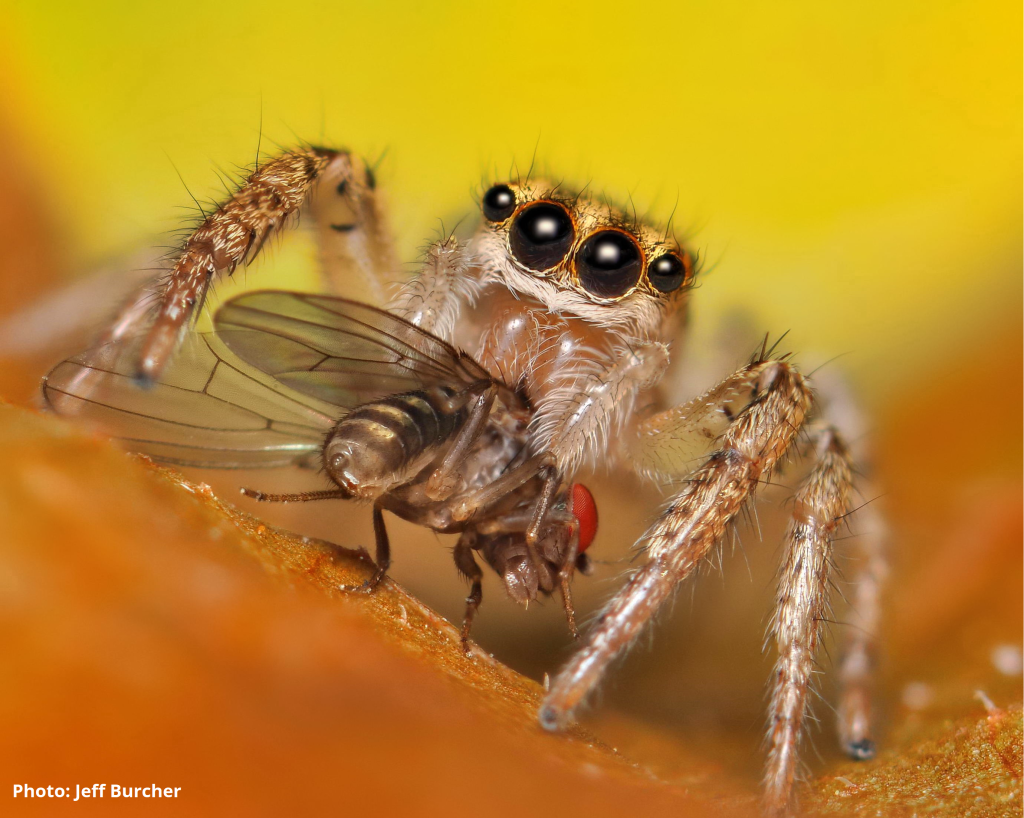
jumping spiders are active hunters. They use their well-developed eyesight and jumping ability to hunt prey. Instead of weaving webs to catch prey, they actively seek out and pounce on their prey with precision and speed.
Unlike many other spiders, they do not spin webs to catch prey, but actively hunt other small insects. Despite their small size jumping spiders capable of overpowering surprisingly large prey, often much larger than themselves. Showing their agility and hunting skills jumping spiders themselves as formidable hunters in the animal kingdom.

The Jumping Spider's Diet
jumping spidersgenerally have a diet consisting mainly of other insects and small prey. They are mostly carnivorous and actively hunt their prey. However, it is interesting to know that some jumping spider species also live partly on nectar. This makes them unique among the arachnids, where most species are strictly carnivorous.
Jumping spiders are agile hunters with a versatile diet. They actively hunt other insects and small prey, but some species also use nectar as an additional food source.
By consuming nectar, these jumping spiders exploiting a complementary food source and potentially taking advantage of the nutrients it provides. This flexibility in nutrition allows jumping spiders able to adapt to different environments and food sources, giving them a wider variety of survival strategies.
Intriguing Communication and Caring
In addition to their hunting skills are jumping spiders also very interesting when it comes to communication and reproduction. Males perform complex and rhythmic dances to attract females. These mating dances involve different movement patterns and vibrations to pique their interest. Through these intriguing dances you can jumping spiders successful pairing.
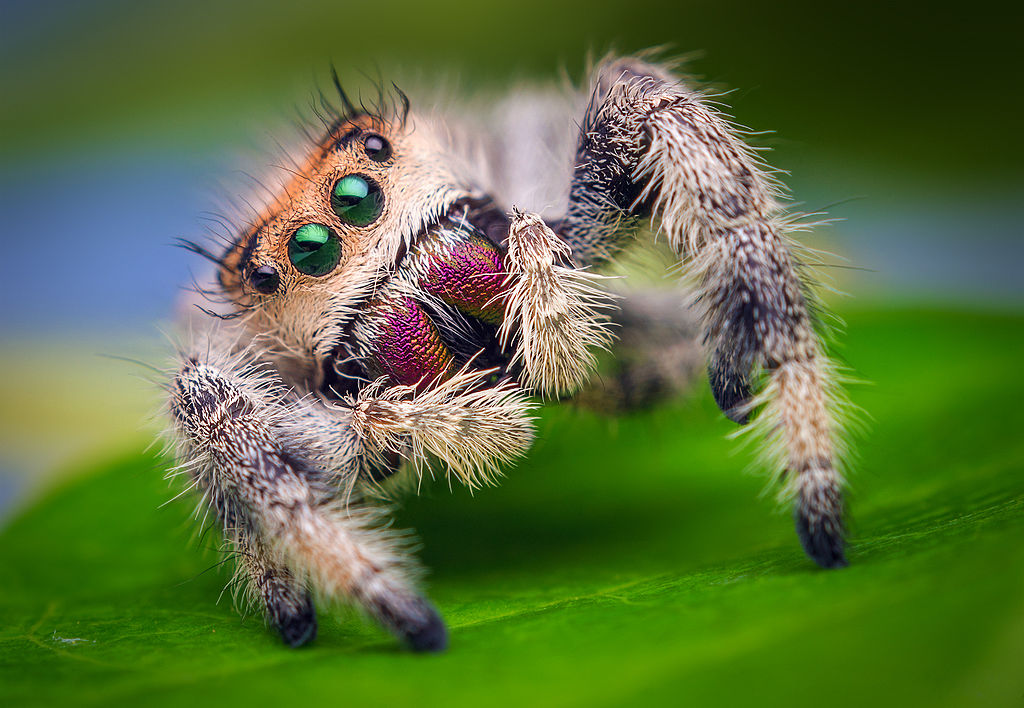
These little spiders show special behavior around communication and reproduction. Males perform a unique dance to attract females, who in turn are very caring and protective of their eggs.
In addition, some jumping spider species are also known for caring for their eggs. They carry the egg sacs with them, in which the eggs are kept safe. These caring webs are protected and guarded by the female until the young hatch. This dedication to protecting their offspring shows a remarkable form of parental care jumping spiders.


